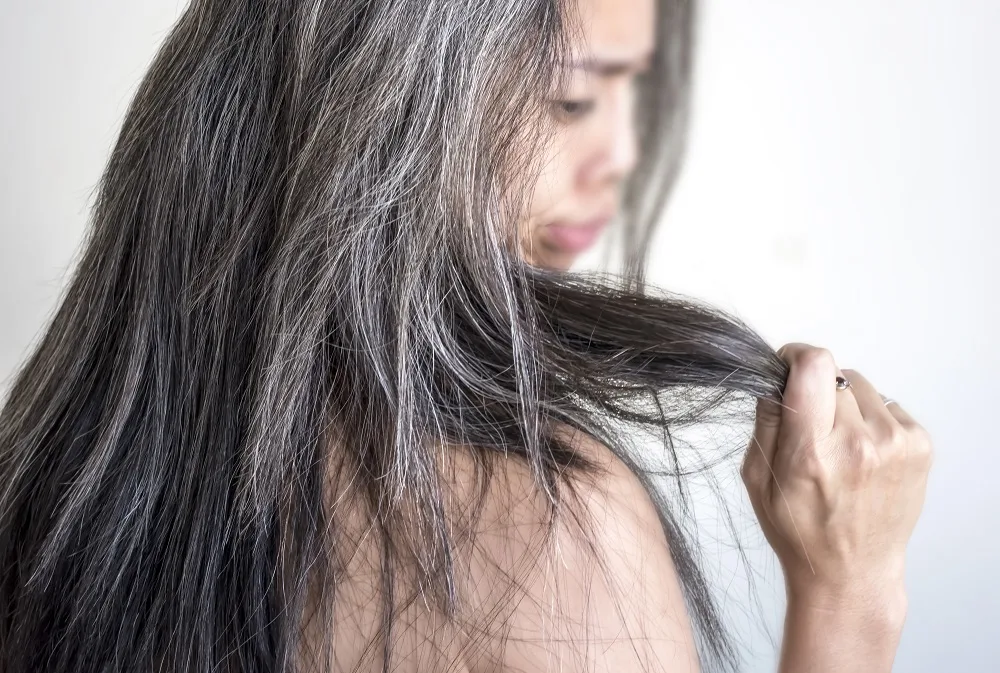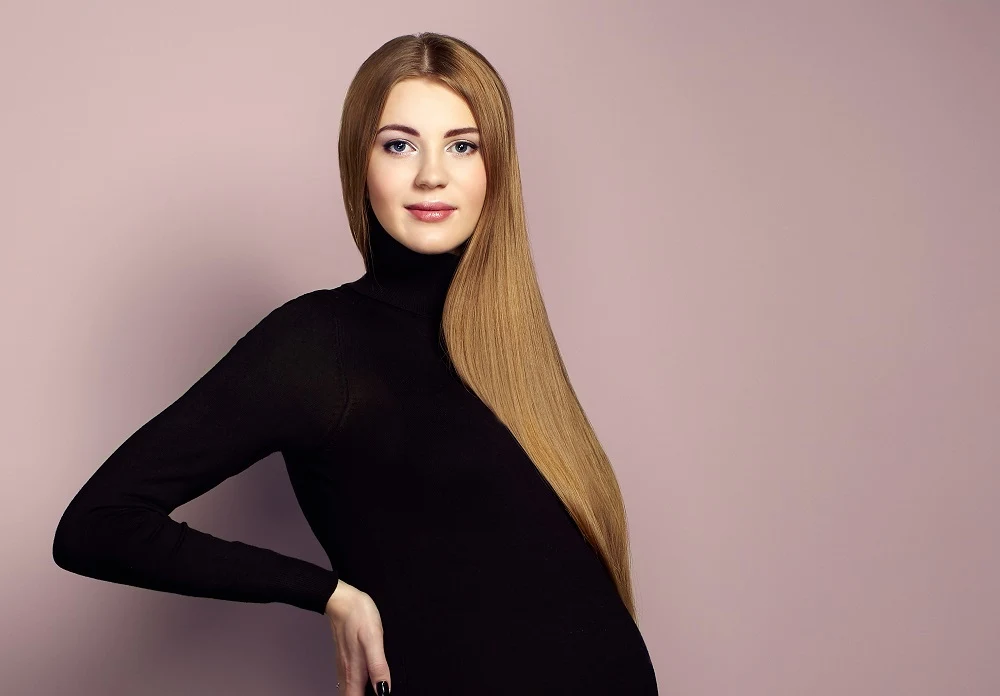Hair texture can change from straight to curly, smooth to frizzy, wiry to fine, and vice versa for all.
But, what causes hair texture change, and when do they happen?
There are four main reasons why your hair texture might change.
- Age
- Hormonal differences
- Medications
- Malnutrition
Let’s see why this happens.
Aging Can Cause Your Hair Texture to Change
Yes, one of the main reasons for hair texture change is aging. When you reach middle age, various things start happening with your body that can lead to changes in your hair texture.
Hair Texture and a Loss of Collagen with Age

Collagen is one of the things that promotes elasticity in hair. Unfortunately, it starts to decline in the body in your twenties and continues declining over time. By the time you reach your 40s or 50s, supplementation is a good idea to keep your hair from becoming thin and fragile.
Author’s Note: Collagen supplementation is a good idea to keep your hair from becoming thin and fragile.
Menopause and Hair Texture
With menopause, the body produces less estrogen and increases its testosterone production. Some people’s hair follicles are more sensitive to this hormonal difference and might begin to miniaturize. This means your hair might become thinner in diameter and more frizzy. It might also start to thin in density, so you might want to look into hair growth shampoos.
Gray Hair Leads to a Wiry Hair Texture

Gray hair can start as early as your 30s, and by your 50s, it’s pretty noticeable. Gray hairs are thicker in diameter than other hairs and also wirier. They can stick up from the rest of your hair and are generally difficult to tame.
They start from an excess of hydrogen peroxide in the hair follicles that bleach the hair, which is one reason why bleaching your hair with peroxide solutions can accelerate the process.
Author’s Tip: Bleaching your hair with peroxide solutions can accelerate incoming gray hairs.
Hormonal Changes and Hair Texture
Hormonal changes can be great, like when you’re pregnant, or not so great like thyroid issues or diabetes.
Imbalanced Thyroid Hormones Can Affect Hair Texture
Thyroid trouble affects every part of the body, even the hair. The thyroid regulates metabolism. If it’s under-active, the effects can show up in the hair as brittleness and hair loss. An overactive thyroid doesn’t necessarily mean the opposite.
When your metabolism is in overdrive, the body has a hard time regulating where nutrients should go. They don’t always end up in your hair follicles, which could also lead to dry, brittle strands.
Pregnancy Can Make Your Hair Texture Lovely

The opposite of menopause in some ways, pregnancy means you’re floating in estrogen and progesterone. This makes the hair follicles produce hair that’s thicker in diameter and glossy. Frizz gets banished during this time. You’ll probably have a prolonged anagen, or hair growth, phase, too. Enjoy it while it lasts!
Hormones, Genes and Hair Texture
Scientists know that hair texture is influenced by genes, but after that, things get a little murky. They say that genes can turn on and off for many different reasons, one of them being hormones. That said, you can have curly hair during childhood and wavy during adolescence and straight, frizzy hair as an adult.
Author’s Tip: Some people have one texture of hair as a child, another during adolescence and another as an adult.
Insulin Also Affects Hair Texture
Insulin is a hormone that helps adapt glucose for the body. Over and under production, or hyperglycemia and hypoglycemia, can change the hair’s texture.
Malnutrition Can Play With Your Hair Texture Too

Different nutrients nourish the scalp and hair follicles that produce healthy hair. If the hair follicles don’t receive these nutrients, they can miniaturize, producing thinner hair and shorten so that the hair doesn’t stay put. Malnutrition also tends to produce hair that’s dry and rough. Some of the nutrients the hair needs are:
- collagen
- iron
- protein
- fatty acids
- vitamin C
Medication Can Alter Your Hair Texture
Some medications can also affect the look and feel of your hair, like some antidepressants. If you notice unwanted changes to your hair texture while taking medication, mention it to your doctor.
Author’s Note: Your hair can come in totally different after chemotherapy, whether thicker, straighter, or curlier.
But the main medicine that causes hair texture changes is chemotherapy. If you lose your hair under treatment, it usually grows back thinner in diameter at first. Then later, it could start coming in totally different–whether thicker, straighter, or curlier.
